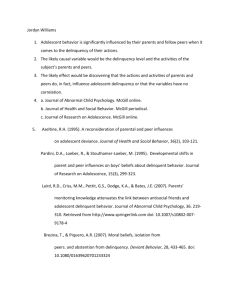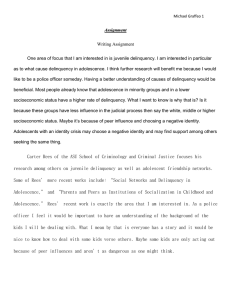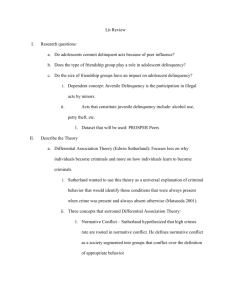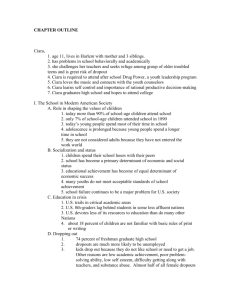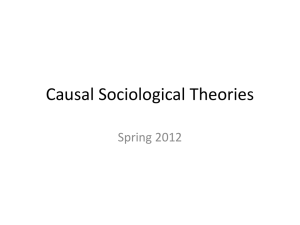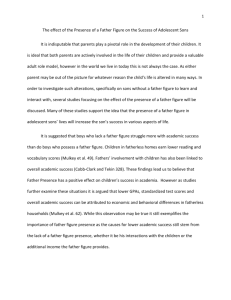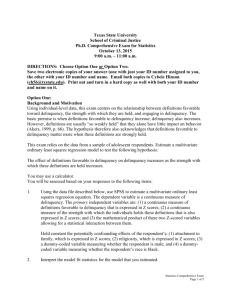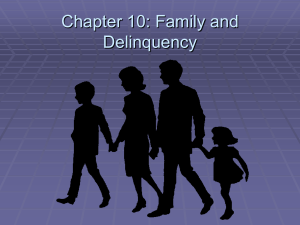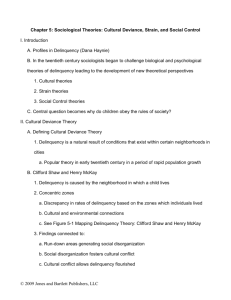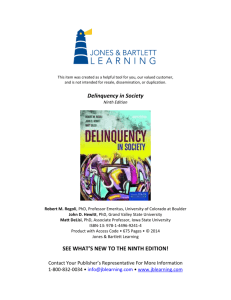Differential Association Theory-presentation
advertisement
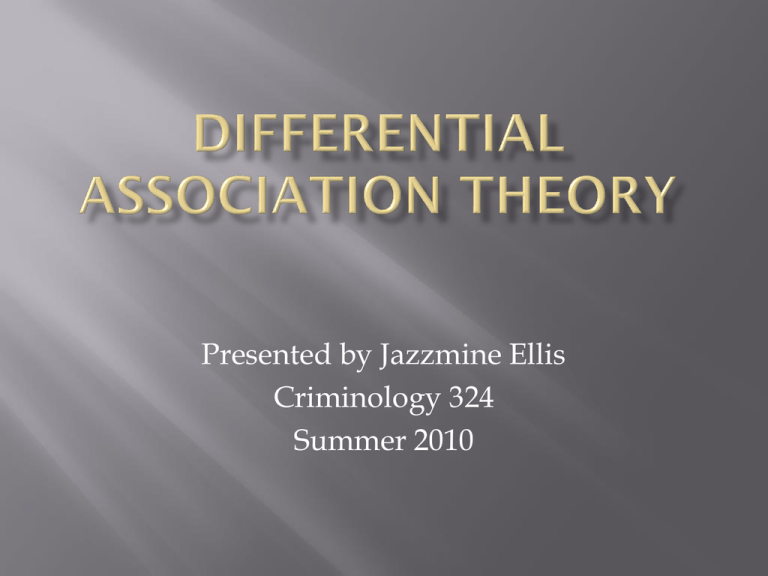
Presented by Jazzmine Ellis Criminology 324 Summer 2010 Adolescent Romantic Relationships and Delinquency Involvement -Authors Dana L. Haynie, Peggy C Giordano, Wendy D. Manning, Monica A Longmore The Development of Delinquency and Perceived Friendship Quality in Adolescent Best Friendship Dyads -Authors Maarten H. W. Selfhout, Susan J.T. Branje, Wim H.J. Meeus *Originated over 70 years ago by sociologist Edwin Sutherland (1883-1950). *The most famous learning theory of crime. Edwin Sutherland’s concept fro the process by which adolescents become delinquent because they are exposed to more lawbreaking attitudes than to law-abiding attitudes. 1. Criminal behavior is learned. 2. Criminal behavior is learned in interaction with other persons in a process of communication. 3. The principal part of the learning of criminal behavior occurs within intimate personal groups. 4. When criminal behavior is learned, the learning includes techniques of committing the crime, which are sometimes very complicated. Sometimes very simple; and the specific direction of motives, drives, rationalizations, and attitudes. 5. The specific direction of motives and drives is learned from definitions of the legal codes as favorable or unfavorable. 6. A person becomes delinquent because of an excess to the violation of law. 7. Differential association may vary in frequency, duration, priority and intensity. 8. The process of learning criminal behavior by association with criminal and anticriminal patterns involves all the mechanisms that are involved in any other learning. 9. Although criminal behavior is an expression of general needs and values, it is not explained by these general needs and values, because noncriminal behavior is an expression of the same needs and values. Agreeing with Sutherland (1939) who stressed the role of intimate communication in the process of transmitting pro-social or anti-social definitions, and recognized that associations vary considerably in intensity, priority, frequency and duration. Analyses of romantic relationships during the adolescent period suggests their general importance to development; Research finds adolescents themselves frequently to describe these relations as relatively intimate and influential. To determine whether and what degree does romantic partner delinquency is related to the adolescents. •Data was used from the first wave of the National Longitudinal Study of Adolescents Health. • Nationally represented sample of students, grades 7-12, with randomly selected schools in the United States from 1994- 1996. •Survey contained very detailed social network data for 129 randomly selected and stratified by region, urbanicity, school type, ethnic mix and size. •Another random sample of home interviewed student. Most delinquency research centered on social networks emphasizes the influence of peers during adolescents of the life course. Because both peer and romantic relationships are of great importance to adolescents, and understanding of the relative importance of each contributes to the growing body of knowledge highlighting the importance of multiple sources of social influence on adolescent behavior. *Evidence* Minor behavior More influential to females than males Belonging to a network where all of one’s friends are delinquent is strongly related to delinquent behavior. In what way does delinquency develop from early o middle adolescence? To what extent does best friends’ delinquency over time, controlling for initial similarity in delinquency? To what extent does perceived friendship quality moderate the longitudinal associations between adolescents’ delinquency and friends; delinquency? According to social control theory (Hirshi 1969), perceived friendship quality predicts less adolescent delinquency when friends’ delinquency is low. According to differential association theory (Opp 1974), friends delinquency predicts more adolescent delinquency in particular when perceived friendship quality is high. The present study shows that adolescent best friends play an important role in the development of delinquency from early to middle adolescent: adolescents show high similarity in mean levels of delinquency and changes over time. For boys, similarity in mean level delinquency is even higher. These results provide evidence for differential association theory for boys. Stability of best friendship does not meet requirements for social control theory Only in school survey of best friends were taken-weakness. Received numerous amount of input from students-strength. This does support the differential association theory which states that adolescent delinquency is found through relations (friends, family).
